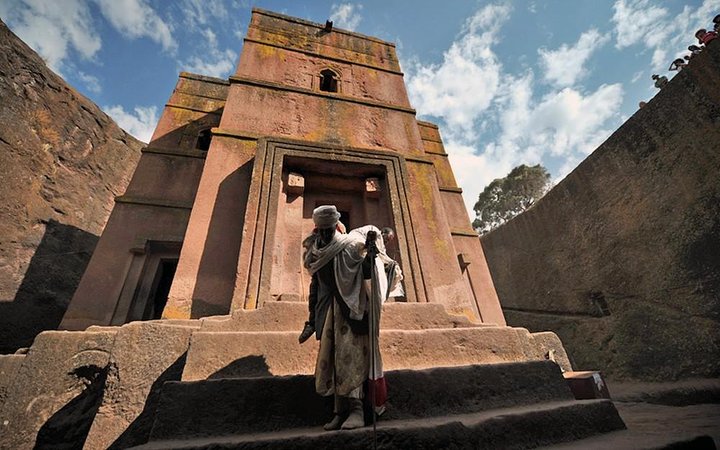Unveiling Lalibela: A Journey Through Ethiopia’s Rock-Hewn Marvels
Drawn by the allure of Lalibela’s rock-hewn churches, I embarked on a journey to explore these architectural marvels. Join me as I uncover the hidden gems and vibrant culture of this historic Ethiopian town.
A Journey Through Time: The Rock-Hewn Churches of Lalibela
As a former city planner turned travel writer, I have always been drawn to the intricate dance between architecture and urban landscapes. So, when I heard about the rock-hewn churches of Lalibela, I knew I had to experience this architectural wonder for myself. Nestled in the heart of Ethiopia, Lalibela is a small town that boasts a rich history and a collection of churches carved directly into the rock. These churches are not just places of worship; they are a testament to human ingenuity and devotion.
Upon arriving in Lalibela, I was immediately struck by the town’s serene atmosphere. The air was crisp, and the surrounding mountains provided a stunning backdrop to the town’s historic sites. My guide, a local expert, led me through the labyrinthine paths that connect the churches. Each church is unique, with its own story and architectural style. The most famous of these is Bet Giyorgis, a cross-shaped church that is both awe-inspiring and humbling. As I stood before it, I couldn’t help but marvel at the craftsmanship and dedication that went into its creation.
Exploring the Hidden Gems of Lalibela
While the rock-hewn churches are the main attraction, Lalibela has so much more to offer. As someone who loves to uncover hidden gems, I was thrilled to explore the lesser-known sites around the town. One such gem is the Asheton Maryam Monastery, perched high on a mountain overlooking Lalibela. The trek to the monastery was challenging but rewarding, offering breathtaking views of the surrounding landscape. Along the way, I encountered a troop of Gelada baboons, a unique species native to the Ethiopian highlands. Their presence added an unexpected layer of excitement to the journey.
Another highlight was the Yimrehanne Kristos church, a beautifully preserved example of ancient Ethiopian architecture. Unlike the rock-hewn churches, Yimrehanne Kristos is built within a natural cave, creating a mystical atmosphere that transports visitors back in time. The church’s intricate woodwork and colorful frescoes are a testament to the artistic talent of the era.
The Vibrant Pulse of Lalibela
Beyond its historical sites, Lalibela is a town that pulses with life and energy. The local markets are a vibrant tapestry of colors, sounds, and scents, offering a glimpse into the daily lives of the town’s residents. As I wandered through the stalls, I was captivated by the array of spices, textiles, and handmade crafts on display. The market is a sensory feast, and I found myself drawn to the lively interactions between vendors and customers.
In the evenings, Lalibela comes alive with music and dance. The local nightlife is a celebration of Ethiopian culture, with traditional music and dance performances that invite everyone to join in. As I joined the locals in their joyful celebrations, I felt a deep connection to the town and its people. Lalibela is a place where history and modernity coexist, creating a unique and unforgettable experience for any traveler.
My journey to Lalibela was a reminder of the power of architecture to tell stories and connect us to the past. The rock-hewn churches are a marvel of human achievement, and the town itself is a vibrant tapestry of culture and history. For anyone seeking an adventure that combines history, culture, and breathtaking landscapes, Lalibela is a destination that should not be missed.










































